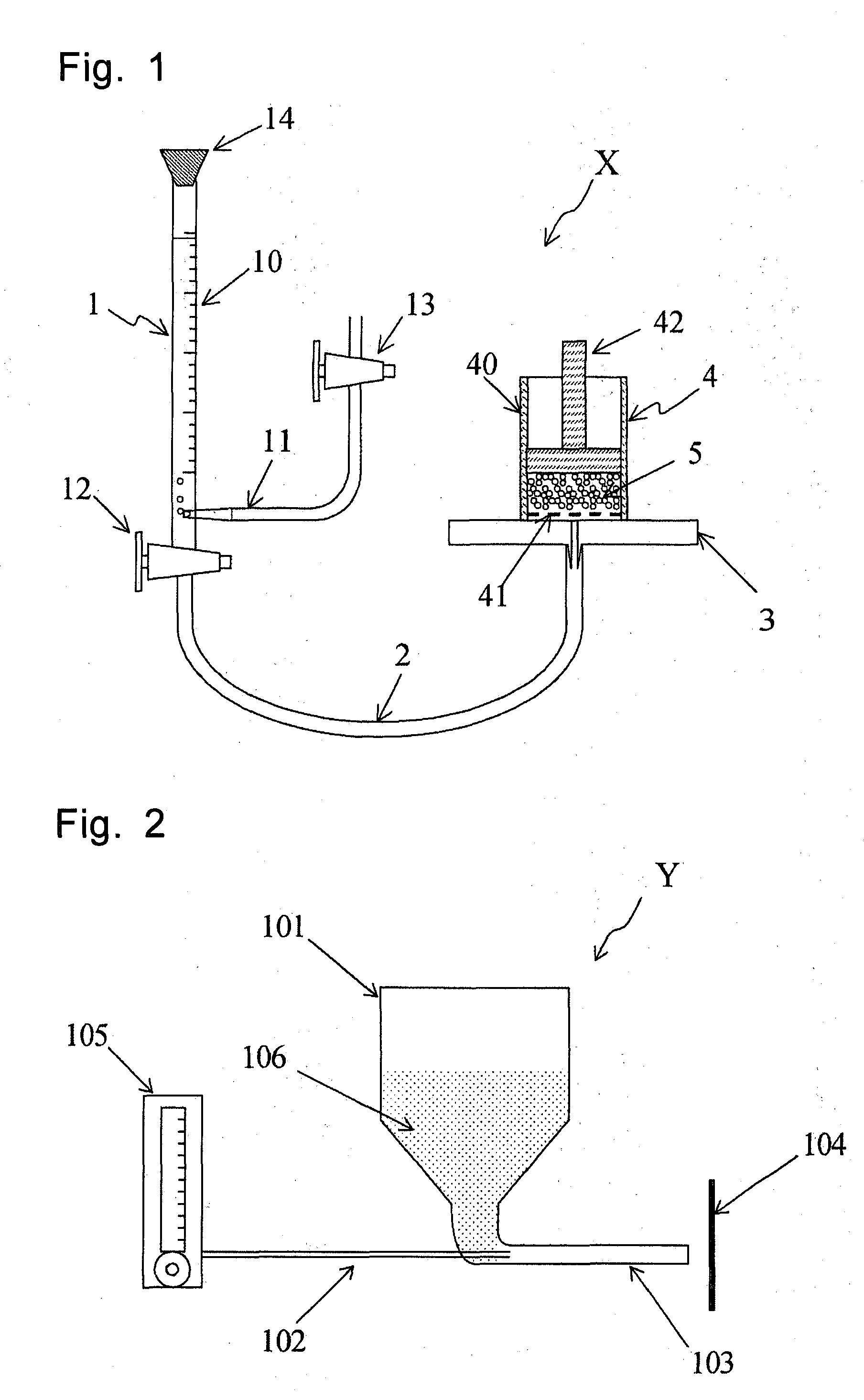Water-absorbent resin particle, method for production thereof, and absorbent material using the same
a technology of absorbent materials and resins, which is applied in the field of water-absorbing resin particles and absorbent materials, can solve the problems of small reduction in performance even after manufacturing of absorbent materials, destruction of particles, and the like, and achieves excellent particle strength, high moisture content, and good particle strength
- Summary
- Abstract
- Description
- Claims
- Application Information
AI Technical Summary
Benefits of technology
Problems solved by technology
Method used
Image
Examples
preparation example 1
[0081]Into an Erlenmeyer flask of an internal volume of 500 ml placed 92 g of a 80 mass % aqueous acrylic acid solution, and 154.1 g of a 20.0 mass % aqueous sodium hydroxide solution was added dropwise while ice-cooling, to neutralize acrylic acid, thereby, an aqueous acrylic acid partial neutralized salt solution was prepared. To the resulting aqueous acrylic acid partial neutralized salt solution were added 9.2 mg of N,N′-methylenebisacrylamide as a crosslinking agent, and 0.11 g of potassium persulfate as a water-soluble radical polymerization initiator, and this was used as an aqueous monomer solution.
[0082]Separately, a five-necked cylinder-type round-bottom flask of an internal volume of 2 liter equipped with a stirrer, a double-paddle blade, a refluxing condenser, an addition funnel and a nitrogen gas introducing tube was charged with 340 g of n-heptane, and 0.92 g of sugar stearic acid ester (trade name of Mitsubishi-Kagaku Foods Corporation: RYOTO SUGAR ESTER S-370) as a s...
example 1
[0085]To 200 g of the water-absorbent resin particle obtained as in Preparation Example 1 was added 1 g of an amorphous silica particle (TOKUSEAL NP, manufactured by Tokuyama Co., Ltd.), the materials were mixed, and placed into a separable flask of an internal volume of 2 liter, the interior of the separable flask was humidified with a humidifier (hybrid humidifier, manufactured by Toyotomi Co., Ltd.) at a water addition amount of 0.4 L / h at room temperature for 20 minutes under stirring, to obtain a water-absorbent resin having a moisture content of 11%.
example 2
[0086]To 200 g of the water-absorbent resin particle obtained as in Preparation Example 1 was added 1 g of an amorphous silica particle (FINESEAL T-32, manufactured by Tokuyama Co., Ltd.), materials were mixed, and placed into a separable flask of an internal volume of 2 liter, and the interior of the separable flask was humidified with a humidifier (hybrid humidifier, manufactured by Toyotomi Co., Ltd.) at a water addition amount of 0.4 L / h at room temperature for 30 minutes while stirring, to obtain a water-absorbent resin having a moisture content of 13%.
PUM
| Property | Measurement | Unit |
|---|---|---|
| water absorption capacity | aaaaa | aaaaa |
| density | aaaaa | aaaaa |
| water absorption capacity | aaaaa | aaaaa |
Abstract
Description
Claims
Application Information
 Login to View More
Login to View More - R&D
- Intellectual Property
- Life Sciences
- Materials
- Tech Scout
- Unparalleled Data Quality
- Higher Quality Content
- 60% Fewer Hallucinations
Browse by: Latest US Patents, China's latest patents, Technical Efficacy Thesaurus, Application Domain, Technology Topic, Popular Technical Reports.
© 2025 PatSnap. All rights reserved.Legal|Privacy policy|Modern Slavery Act Transparency Statement|Sitemap|About US| Contact US: help@patsnap.com

